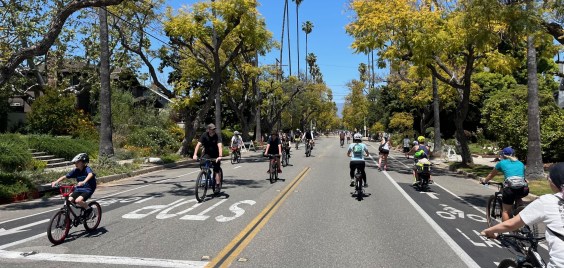Community Land Trust Seeks to Revitalize Vacant Lots in Santa Ana
10:00 AM PST on December 29, 2016
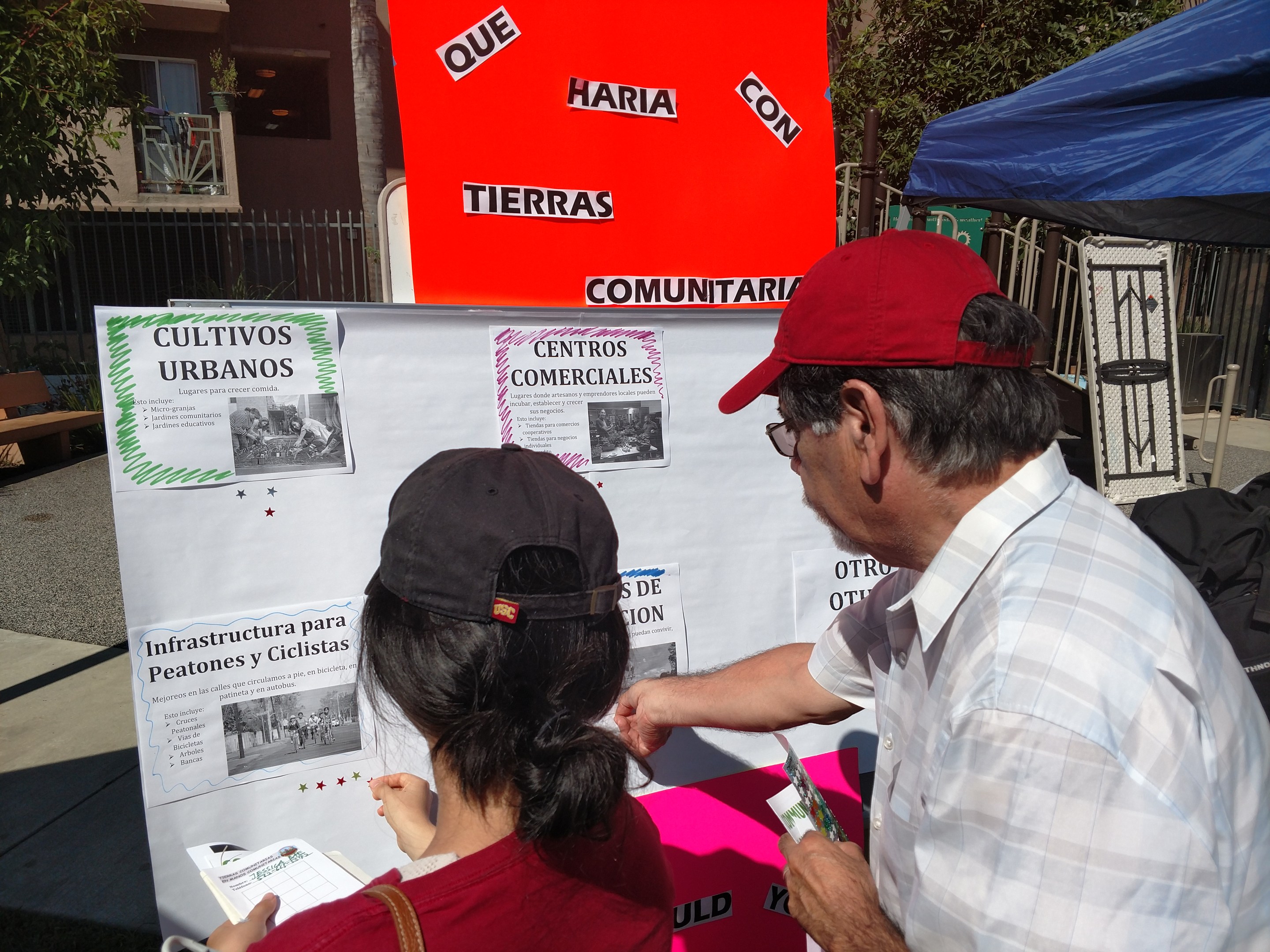
Residents participate in a planning exercise during the launch event in September for the Santa Ana Community Land Trust. Photo by Kristopher Fortin
Vacant lots are a common site in cities, and their existence can persist for years. Marisela Islas, 63, lives across the street from a fenced-off vacant lot on Bristol Street that stretches for an entire block. The dirt-filled lot is kept clean, she said, and she's complacent: it's not much to look at but not something that bothers her. But, when asked if she'd like a park or more housing there, she said sure. "Mejor que cómo está ahorita (Better than how it is now)."
The city of Santa Ana owns more than ninety such vacant lots, and residents have been working with the city on how put them to the best use. One solution has been to establish a nonprofit community land trust (CLT) called Thrive Santa Ana.
Two weeks ago the city council directed staff to continue working with the soon-to-be-incorporated land trust to find the best way to transfer ownership of the city’s vacant properties.
“We have here before us an opportunity . . . to look at something that would be a more sustainable benefit to the public,” said David Benavides, Ward 4 council member.
Thrive Santa Ana is the result of years of work trying to bring accountability and better results to the city from the way land is developed. To create better accountability of city staff and representatives, residents pushed Santa Ana to pass a Sunshine Ordinance in 2012. To add more affordable housing, residents pushed city council last year to pass the Housing Opportunity Ordinance, which requires new developments to make at least fifteen percent of its units affordable ones or pay a fee that would fund other affordable housing projects.
Land developments in the city, whether public or private, have often moved forward without thorough engagement from residents, said Nancy Mejia, community engagement and advocacy programs director for Latino Health Access (LHA). Thrive Santa Ana's emphasis on resident involvement in decision-making, combined with its ability to own land, would open the door to tackling some of the city's most prevalent issues, such as its lack of affordable housing and open space, Mejia said.
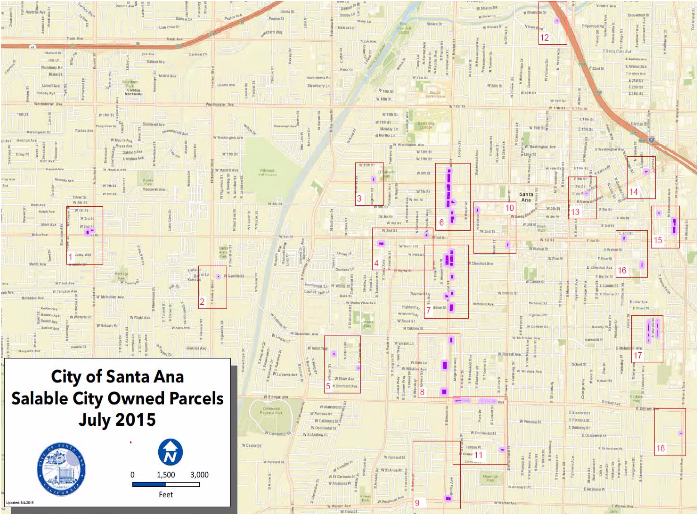
Equity For All, a coalition of community groups and residents, has led the effort to develop the community land trust. Thrive Santa Ana would acquire homes or land from private and public sources, including federal housing subsidies, community foundations, private donors, or donated city-owned properties.
Thrive Santa Ana is currently seeking 501(c)3 nonprofit status, but it has already formed an interim board of directors consisting of local residents and other stakeholders to create bylaws. The interim board includes Santa Ana residents and representatives from Orange County Communities Organized for Responsible Development, LHA, The Kennedy Commission, and El Centro Cultural de Mexico.
Once Thrive Santa Ana's nonprofit status is established, a new board would make choices on developments and provide accountability for the trust’s portfolio. Through a process developed by residents and community groups, the public would be the guiding force on how the lands would be used, Mejia said.
At the beginning of fall this year, Thrive Santa Ana started gathering feedback from residents on what they wanted in the city’s vacant lots. The group held a launch in September at Parque Familias Corazones Verdes, the site of a formerly vacant lot that has been transformed into a public park and community center. Earlier this month Thrive Santa Ana conducted a walking tour of another lot followed by a discussion of the city’s lotes (lots) while enjoying elotes (corn).
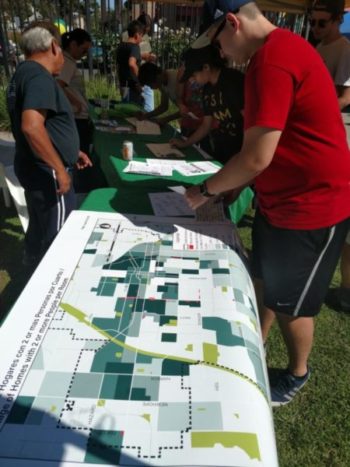
Thrive Santa Ana's supporters have also kept up pressure on the city. They've worked with the city manager's office to develop the CLT, and in October supporters filled the city's Development and Transportation committee meeting to standing capacity.
There are more than 240 community land trusts in the U.S., with twenty of them in California, according to the National Community Land Trust Network. Many CLTs develop and build affordable housing, but they have also been used to develop open spaces or marketplaces.
Thrive Santa Ana members say the CLT could help alleviate the city’s homeless and housing affordability crisis. In Santa Ana, thirty percent of people eighteen and younger are living in poverty, and 63.6 percent of the city's households are in low-income categories. One-third of Santa Ana’s households are overcrowded, roughly three times the rate in Orange County, according to the American Community Survey.
The Community Land Trust would also be bolstered with policy. OCCORD released a report two weeks ago proposing that the city fund the CLT by passing a community benefits agreement, which could require “that a portion of the proceeds from parcels sold to private developers be directed to the Community Land Trust.” It also suggested that “future large development projects that receive public subsidies or support. . . bring benefits to the community in addition to the developer.”
Irvine is the only other city in the county that has a community land trust, but its main focus has been on affordable housing. While having two CLTs would be good for the county, Joesé Hernandez, Communications and Operations Coordinator for OCCORD, hopes other cities in the region can create their own. “We don’t just need one [CLT], we need one in every city,” said Hernandez.
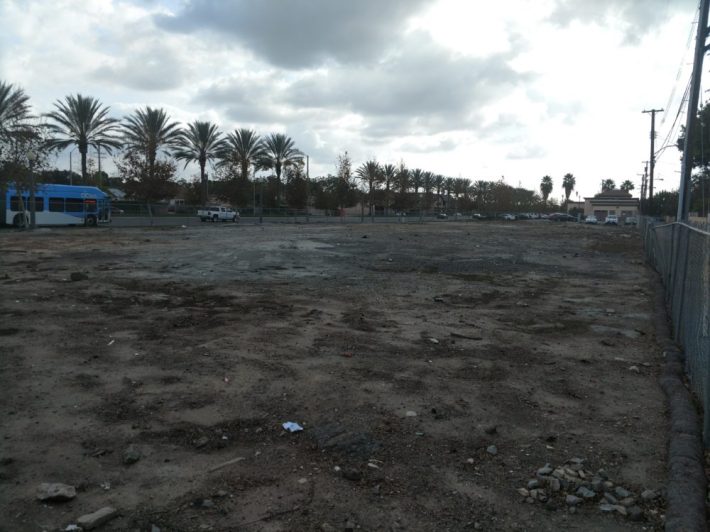
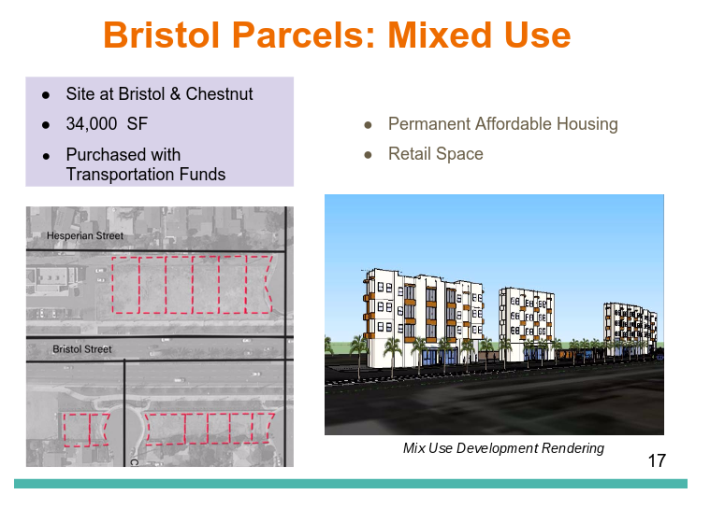
So far, Santa Ana’s city manager’s office has been supportive of developing the community land trust.
During the December 6 city council meeting, the city manager’s office received the council’s blessing to move forward with: 1) the donation of a property on Walnut and Daisy, 2) exploring ways to transfer/donate properties to the CLT, 3) helping the CLT secure funds to buy the vacant land, and 4) helping the CLT develop and adopt a financial plan.
Whether a lot can be sold or donated depends on how the lots were purchased by the city. Funding for the parcels could have come from the city, state, or federal government, and each source has different guidelines on how to handle excess property. The city has been researching how the vacant lots were initially purchased, whether and how they can sell, donate, or lease the land, and identifying funding sources to help the CLT buy or lease land, said Robert Cortez, deputy city manager for Santa Ana.
The Walnut Avenue property, for example, was purchased using money from the city’s general fund. City staff recommended it be donated in part because it has few restrictions on how it could be transferred.
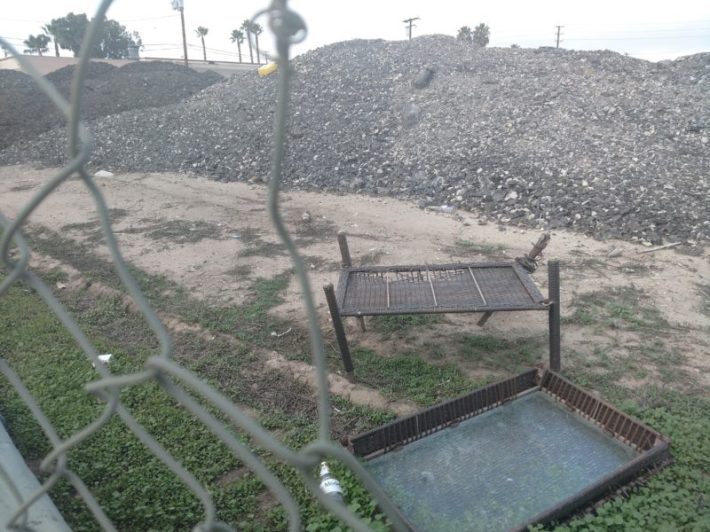
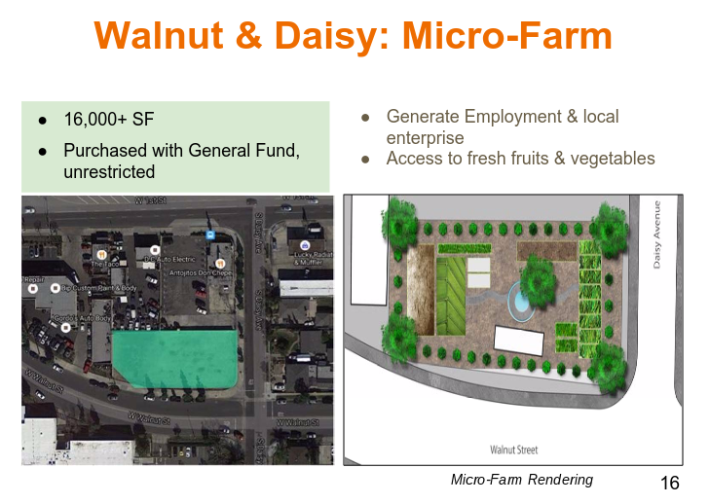
Property bought with county, state, and federal funds may have more strings attached. On Bristol Street, where the largest concentration of vacant city-owned lots is located, the city purchased many of the lots adjacent to the street to widen it, using Measure M funds from Orange County Transportation Authority’s half-cent sales tax. That means the city is required to return excess funds to OCTA if it sells one of those properties, said Joel Zlotnik, OCTA spokesperson.
Program guidelines on funding sources do change and are updated, Zlotnik added. If a property was bought many years prior, the guidelines on how to handle the property may have changed.
That’s why city staff has been compiling a list of the more than ninety properties, and “If anyone’s interested, they’ll be able to look up [the] square footage, funding source, restrictions,” Cortez said.
Yet the city hasn’t made that information public just yet. In my interview with Cortez, the deputy manager said that a report indicating the location, square footage, funding sources, and restrictions of the vacant lots would be made available at the City Council’s December 6 meeting, but this presentation was the only information made available. I followed up after the meeting for that report but was sent the same presentation.
So if it sounds like things are still up in the air, they are. Aside from the Walnut/Daisy property that is scheduled to be donated to Thrive Santa Ana, there are still 96 city properties whose future remains undecided.
But with luck, and the work of Thrive Santa Ana, the lots will likely see some use in the near future. And for residents that have felt left behind by some of the city's changes, they have in Thrive Santa Ana a response: a continued community effort to further take more ownership of their environment's destiny.
Read More:
Stay in touch
Sign up for our free newsletter
More from Streetsblog California
Active Streets Mission-to-Mission – Open Thread
Tens of thousands of participants biked, walked, skated and scootered on car-free streets through San Gabriel, South Pasadena and Alhambra
Four Things to Know About the Historic Automatic Emergency Braking Rule
The new automatic emergency braking rule is an important step forward for road safety — but don't expect it to save many lives on its own.
Supervisor Melgar Betrays Promises, Sells Out Family Killed in West Portal
Well that didn't take long
Tuesday’s Headlines
Robotaxi breaks the law, Waymo defends it; Whistleblower sues Caltrans; SANDAG gets a new leader; Zero-emission zones are helping fight pollution; More

